Sculpting My Education
Minerva Macarrulla ’23
For almost my entire college selection process, I was convinced that I was destined for Hampshire College. (You can read more about that journey here.) A big part of the pull for me was how self-directed and open-ended the curriculum is. The purpose of the school that they articulated really seemed to be embedded in its academic structure. I knew how my brain worked then and I still know it now: self-directed learning leaves me with the most compelling, most personally relevant, and most memorable takeaways. There was a video on Hampshire’s website back then that I must have watched a thousand times, and I can still hear the narrator's words echo clearly in my mind. "We want students who want to make their education more than they want to just take it."
I still think Hampshire would have been a great fit for me, but looking back on my college experience at Oberlin so far, it hasn't been nearly as far off from the self-directed education I wanted as I thought it would be as a high school senior. I didn't build my education from the ground up, sure, but I've definitely gotten to knead my thumbs into it quite a bit. It is rolled and pounded, pinched and indented in all the places I could have possibly made it a little more my own. There are so many areas of study at Oberlin that are more strictly ordered and set in stone, but of course, I ended up dwelling in the ones that work for me. Good news: I have found, scavenged, been pushed towards, and created the mental independence that I was looking for from the beginning.
At the same time, bit by bit, I've definitely gained an appreciation for the classes I never would have taken if they hadn't been required of me at Oberlin (looking at some of the core Environmental Studies requirements here…). Even though I honestly suffered through them, there are bits of knowledge and overarching frameworks from every one of those classes that I still refer back to all the time. They inform the parts of my academic work that I do want to do. I'm open to the possibility that maybe not having a completely customizable curriculum is "for my own good."
I want to share a summary of every open-ended academic project I have completed at Oberlin, sorted chronologically by the semester and year when I did them. The list below gives a pretty good picture of the parts of my in-class experience that have been self-directed. Still, between revitalizing student organizations, bringing choreographic visions to life, running an informal massage business and more, it's only one piece of the self-directedness that my on-campus life has indulged. There have been a lot of these academic projects, so I'll start with just the first eight, which happened during my first two years at Oberlin. Brevity is not my forte (I tried), so feel free to skip through any that don't interest you.
1) A Schema for Every System
My first-year seminar, American Mixed Blood, was about mixed-race identities and experiences in the US. For our open-ended final research paper, I chose to focus on the ways that Spanish-speaking Caribbean communities, which have been largely mixed-race since essentially the donning of colonization, are racially categorized in the US. I researched in what situations people of Dominican and Puerto Rican descent were categorized on a nationality basis, versus based on a US understanding of race dominated by a Black/white binary, versus along a continuum of words (prieto, negro, moreno, mulato, jabao, mestizo, trigueño, blanco) familiar to Spanish-speaking Caribbean countries. My curiosity arose out of a frustration with mainstream categorizations in the US (as reflected in demographic surveys, media, and everyday language), which have a way of erasing racism/colorism among multiracial Latine communities by describing Latin American people only by nationality.
At the time when I wrote this paper, I felt like it was so essential for linguistic categories to match truth exactly. I was kind of obsessed with consistency and precision. Since then I've realized just how imperfect most language about identity is. I don't think this is a paper I would write now, but it was important for me to hash out some gaping silences in the world around me, think through my own white Latina positionality, and call attention to the impact of racialized physical features, not just culture, on Latine people's lives.
2) Harvest of Memory
In Latinas/os in Comparative Perspective, we read Latinx Superheroes in Mainstream Comics by Luis Aldama and then had an assignment to create our own Latinx superhero. I just reread my whole assignment and if I do say so myself I'm very impressed with how, a month after being sent home for the pandemic, I wrote a story that interwove detailed Dominican history, my own family history, plot points from a novel about my namesake, and my imagination of the nonhuman world as a site of tangible magic, power and revolution. The superheroes in this story derive their powers from their closeness to cacao (the power to dry out and grind up, learned from cacao processing) and butterflies (the power to understand messages and warnings that the butterflies carry between different parts of the antitrujillista/Fourteenth of June movement). The story is told through a dialogue between a child and her father. The father has stopped using his powers since he arrived to the US, which is an extended metaphor for assimilation. I loved creating this project, from the story to the illustration of a certain grandmother's garden to the short paper explaining how it all came to be.
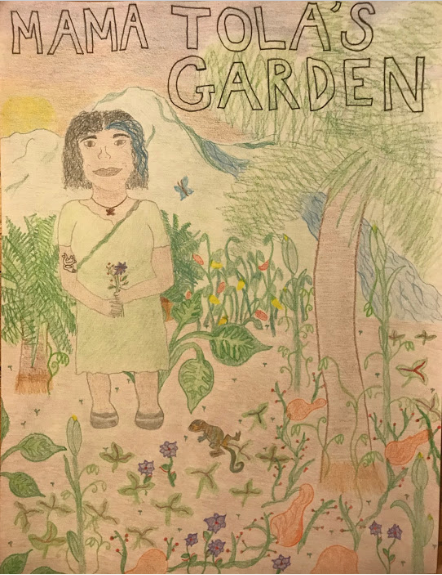
3) Third Mind, Middle Voice… Expanded Touch
I actually wrote a whole blog entry on this one, which you can find here. In summary: I had an open-ended assignment to create a "score" at the end of a dance improvisation class, and a friend and I danced to a recording of ourselves talking about improvising together. The goal had originally been to respond to, or "transcribe," the conversation as we heard it, but because the volume was low, neither of us could hear it for essentially the entire time. When we looked back on the video, though, the amount of parallels between the dialogue and the dance happening at the same time was truly astounding. We ended up writing about our intuitive knowings about the conversation dropping into our bodies and speculating about whether intuition was always necessarily separate from hearing something subtly and processing it unconsciously. Our shared conclusions were that scientific and spiritual ways of knowing are not mutually exclusive, and that we could find physical connection while socially distanced from this in-tune, spontaneous place.
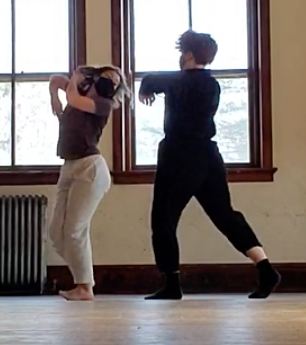
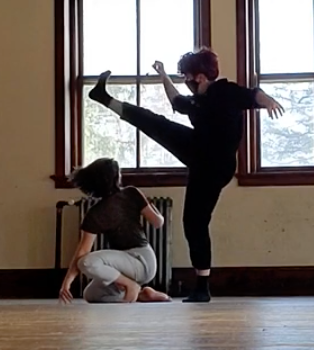
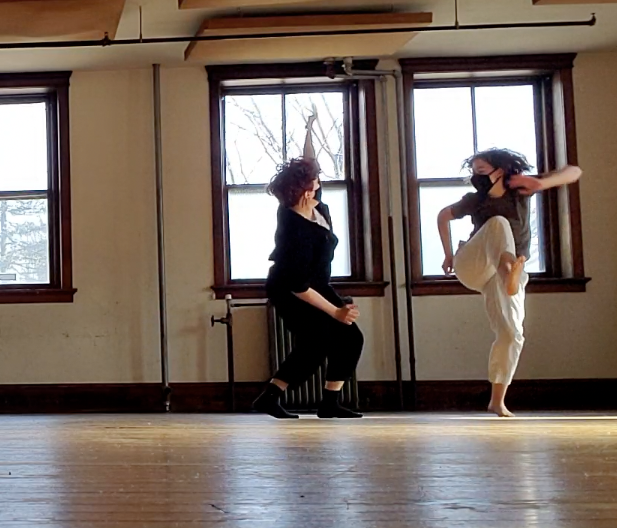
4) Sound Walk Dance
In Intro to Environmental Humanities (best class ever <3), we had an assignment to take a walk without speaking and listen to our surroundings more deeply than we normally do. It followed a discussion about the privileging of sight over other senses in human society. To do my best to summarize one part of a complex conversation that has a lot of context: prioritizing sight has often let people believe the settler colonial myth that humans are so different from other animals that we are separate from nature, superior to nature, and unable to thrive in multispecies ecosystems.
We were allowed to reflect on our sound walks in pretty much any artistic medium or presentation style that we wanted to. Having been thinking about transcribing sound and ideas into movement recently, I decided to video myself dancing in the middle of the woods. No regrets there. There is still a fun little clip in my google drive, a minute and 33 seconds long and edited to highlight the more eventful moments, of me reacting to the birdsong around me in the most embodied way I could have.
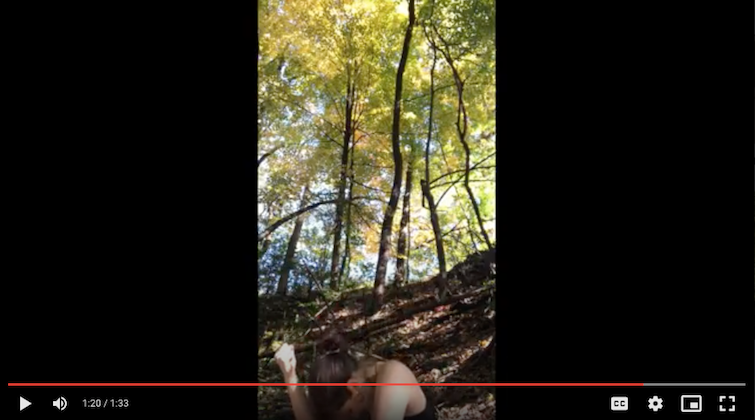
5) Queerness Across Species
In Introduction to Queer Studies, we had an assignment to write a paper about any current event having to do with queer and trans issues. This is a paper that I can look back on and laugh, but that still somehow rings with essential truth. I wrote about multiple incidents in which some zoo penguins were found to have chosen same-sex mates for life. I analyzed YouTube comments and interviewer attitudes. The theme that emerged was naturalness and unnaturalness, which had also come up in several of our readings throughout the semester. Sometimes naturalness was envisioned as exclusively cis-hetero and used to justify hate, while other times it was used to honor diversity. Still other times, words and species associated with naturalness were used as transphobic and homophobic insults (e.g. comparing people to dogs, ducks, and monkeys). In summary: "Because other species are seen as more 'natural' than humans, an event involving queer penguins is that much more likely to spur discussions on what orientations can be called 'natural.' …In regards to gender and sexuality, human society tends to project 'naturalness' as worthy of preservation or worthy of erasure depending on whether or not something conforms with cisgender and heterosexual human norms."
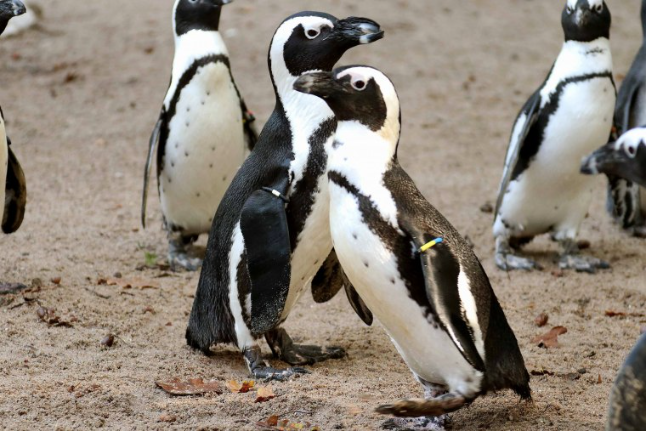
Source: NBC News
6) C(a/o)c(ao/oa)
Environmental Humanities again: I started out with the question, "What is the difference between cocoa and cacao?" and from there I spiraled into a multinational corporate and familial history that left me with so many answers and several new questions. I can't resist at least telling you the gist, so here goes. The word "cocoa" is a corruption of the word "cacao," created in the early 1800's when a British dictionary combined it with "coco" (the Spanish word for coconut) by accident and never changed it back. Common use of "cocoa" falls metaphorically in line with its origin story. Cacao is a plant with millennia of indigenous relationship and medicinal usage; cocoa is the product mass-manufactured when cacao is shipped across oceans to be combined with refined sugar, dairy and/or other ingredients. The actual cacao content of chocolate had to be de-emphasized in advertising for decades in order to sell the product to white audiences, who had to be convinced it was not too "exotic." Lots of early advertisements placed milk and sugar— associated with purity for their whiteness, which is not a coincidence— at the forefront instead. These ads also relentlessly emphasized where the product was "from"— i.e., the US or European place where it had been manufactured.
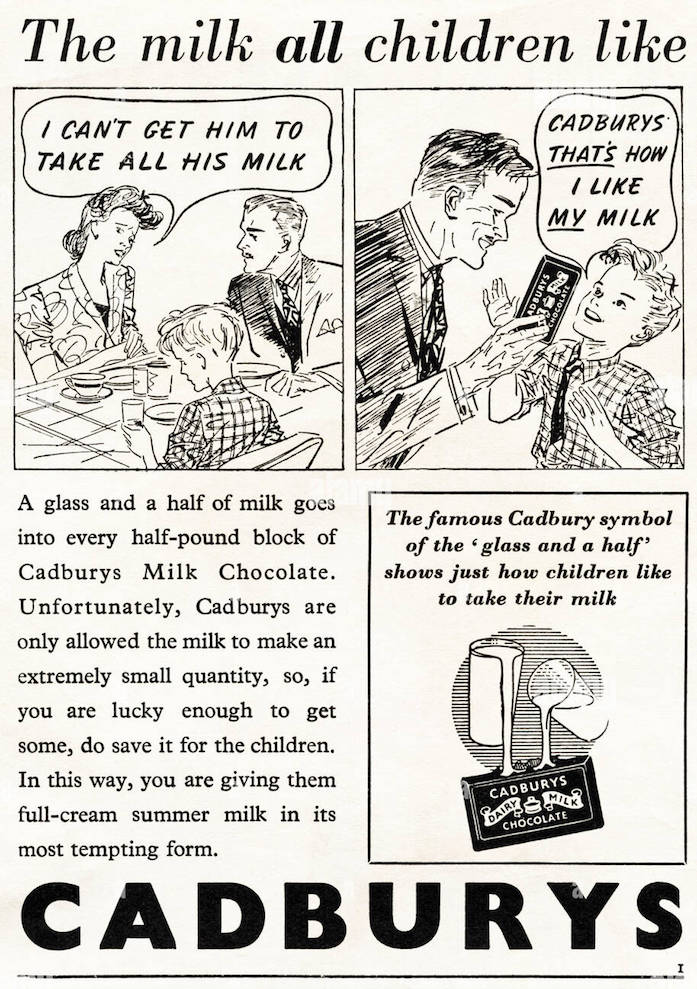
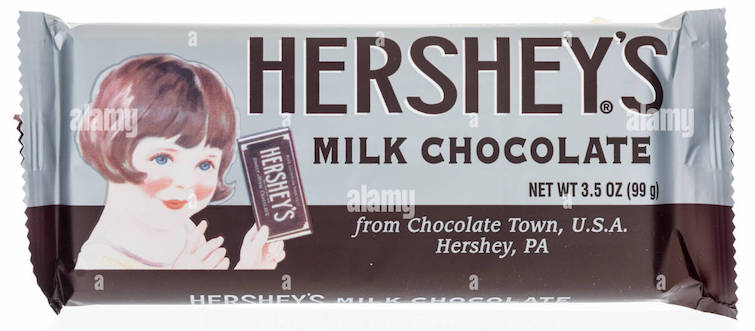
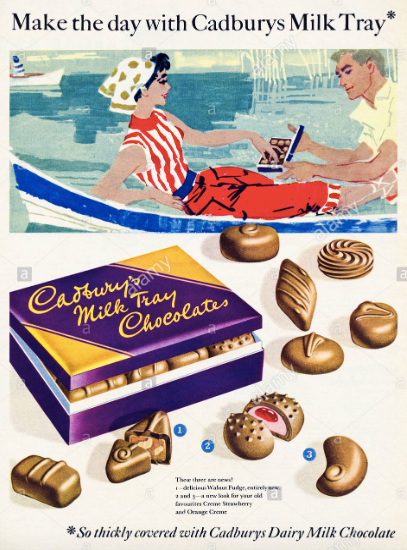
What made me so curious about chocolate? Originally, because I was trying to make sense of things I had heard my parents say. My mother, who is first-generation British American, grew up craving the English chocolate that her mother carried in her purse. When I was younger, she would rave to me about European-manufactured chocolates. ("You have to try this. The Swiss are known for their chocolate.") My father, who is from the Dominican Republic, grew up visiting his grandmother's farm. He has described to me, with lively nostalgia in his eyes, the interactions he had with cacao as a child— watching it harvested and dried, sucking the white candy goo from the pods' guts. In the Dominican Republic in 2018, a distant relative handed me chocolate from the Spanish company that had bought my great grandmother's land. Remembering my father's cacao stories and my mother's Swiss chocolate comment, I asked if Dominicans were known for their chocolate. Without pause, my father said no.
This project allowed me to return to the shock and discomfort of that moment and stare at the conditions that make this inconsistency possible. What makes a nation "known for their chocolate"? What parts of the process are we erasing when we call a product only by where it was manufactured, labeled and advertised? (Is it really just Swiss chocolate if it's from West Africa, the Caribbean and Central America? Or is Swiss the label, out of every nation whose labor and history has touched it, that makes the product reputable in the eyes of racial capitalism?) In short, why do we remember where the chocolate became cocoa, but not where it was grown, tended, and known, first, as cacao?
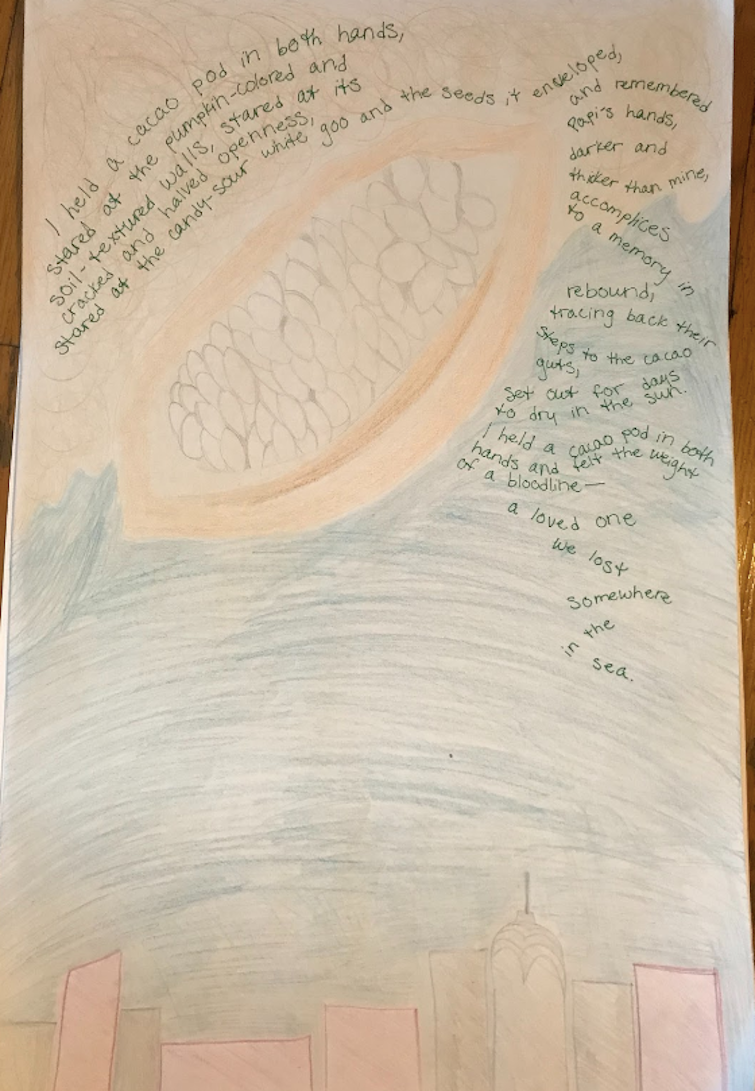
7) Informal Practices of Sanctuary
A class I took called Sanctuary, Solidarity, and Latinx Practices of Accompaniment called for a semester-long group project highlighting an example of sanctuary practices. My five-person group created a podcast episode that was about informal practices of sanctuary, focusing on the state of Georgia. The definition of informal that we came up with for this context: not hugely funded, not written into policy or backed by an institution, and not public-facing (think of rideshares and carpool networks for undocumented people, text and social media alerts, and other efforts to countersurveil ICE). This was a wonderful project because it was multimedia in both the things we turned in (podcast recording, presentation and papers) and the sources we used (multiple people's personal experience, scholarly journal articles, and online primary sources that are used as tools for informal sanctuary). It definitely helped that we had a friendly group dynamic and that every one of us was invested in the topic. Bonus memorable moment from the day we presented: blasting "Pepas" by Farruko, which we were collectively obsessed with, on repeat as the class filed in.
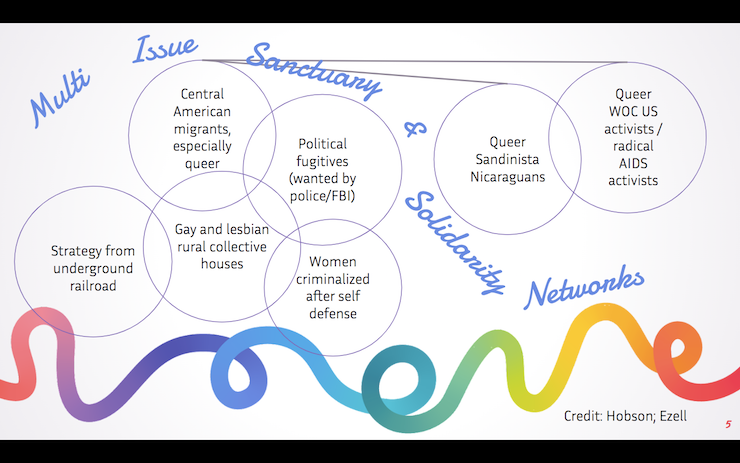
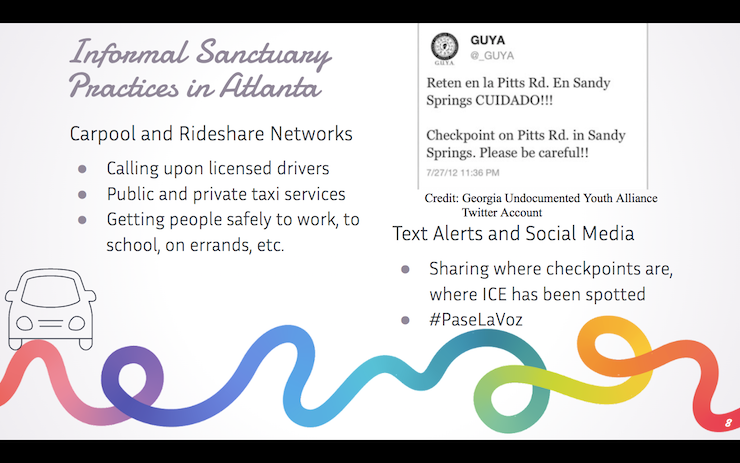
8) Coalitions for Garden Justice on the Lower East Side
By far the most official-looking thing I have ever turned in for a class, complete with a title page that actually says stuff, section headings, and other formalities. Too bad I wrote it in like, the biggest rush of my life, but I loved this project dearly. Our semester-long and ultimately final project in Theories and Methods of Comparative American Studies was to write a research proposal as if we were actually applying for a grant or fellowship to conduct research in American Studies. The research I proposed was about the movement that founded More Gardens, an organization I had interned with the season before (and am interning with again now!). In 2000, despite activists being chained into a giant coquí (Puerto Rican frog) sculpture inside a garden that had held and fed a community for decades, developers demolished the garden with a bulldozer. The brutality of that demolition convinced a city judge to preserve 200 other gardens which would otherwise have been subject to violent gentrification (i.e. becoming luxury apartments) as well. I heard several iterations of this story as a More Gardens intern from people who had been there, and each one ended the same way: "That garden died so that all the rest could be saved."
I entered into this project thoroughly captivated by this story. I was less captivated by the idea of hitting all these specific points we had to hit in our research proposals in a format I wasn't familiar with (the lit review section was hard). Still, I walked away from Theories and Methods with a much deeper understanding of how people do humanities research. Part of that was from thinking out the logistics, timeframe, methods, methodology, and existing conversations relevant to researching this history.
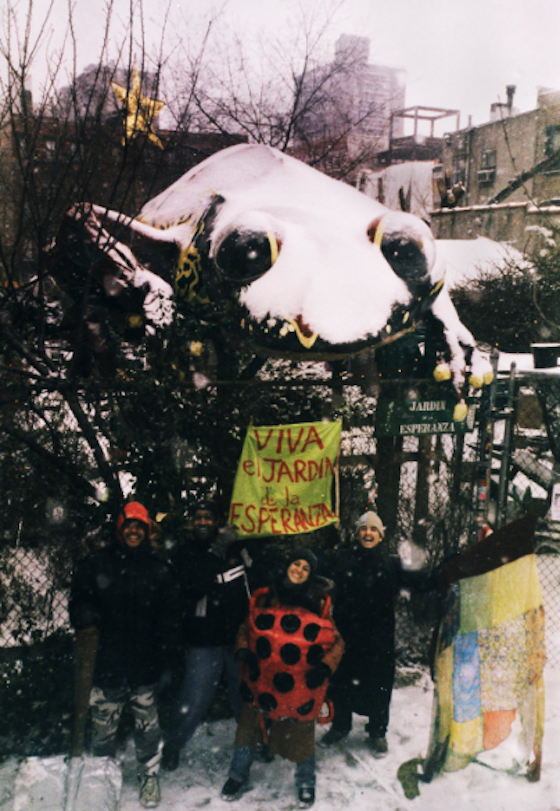
I should let you know that this list is not at all a typical representation of what an Oberlin student studies. Instead, you're basically looking at the inside of my late 2019-mid 2021 brain. These projects have my fingerprints all over them in permanent ink. I have been lucky, blessed, and privileged to construct projects that overlap with one another, invite impactful conversations with classmates and professors, contribute to my healing, inform my activism, and dramatically expand my worldview.
If you found this list interesting, stay tuned for part 2: the last 8 open-ended projects I've completed at Oberlin, which were all during my third year. Till then… I hope you're having a great summer!
Tags:
Similar Blog Entries
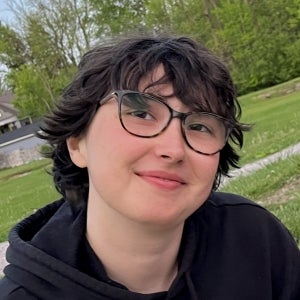

Course Registration: To Explore or to Specialize
To explore or not to explore? To narrow in or not to narrow in? These are the questions.
